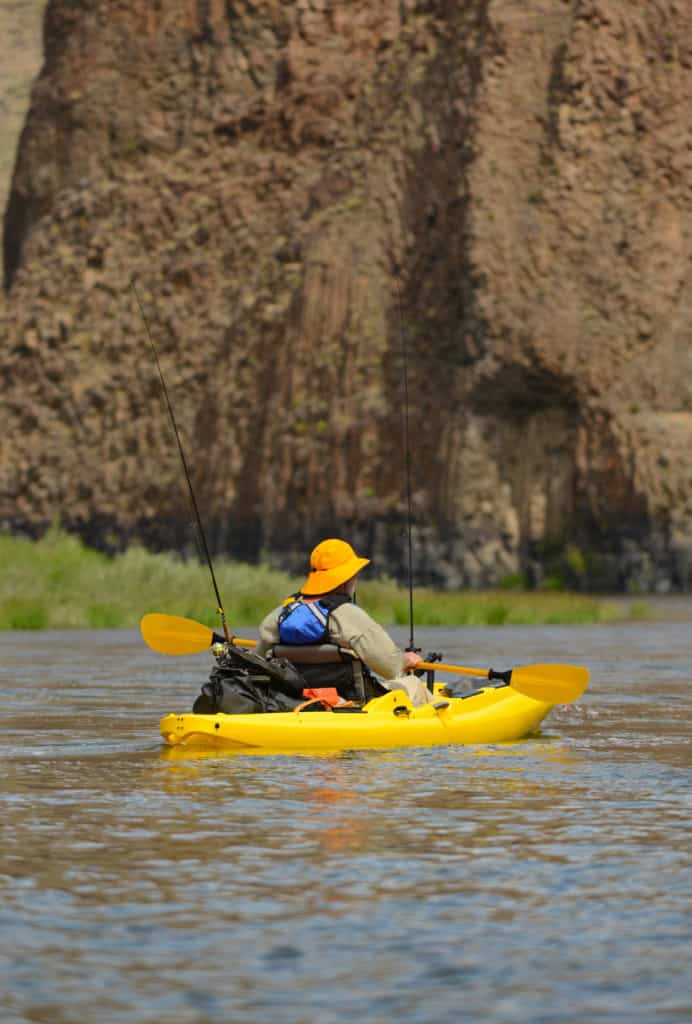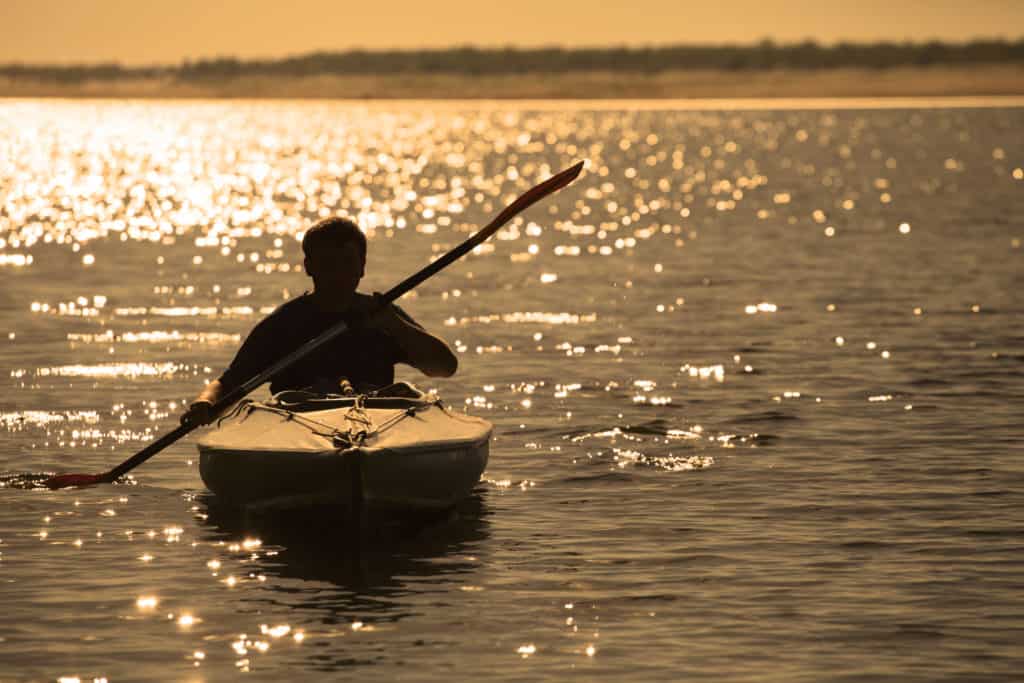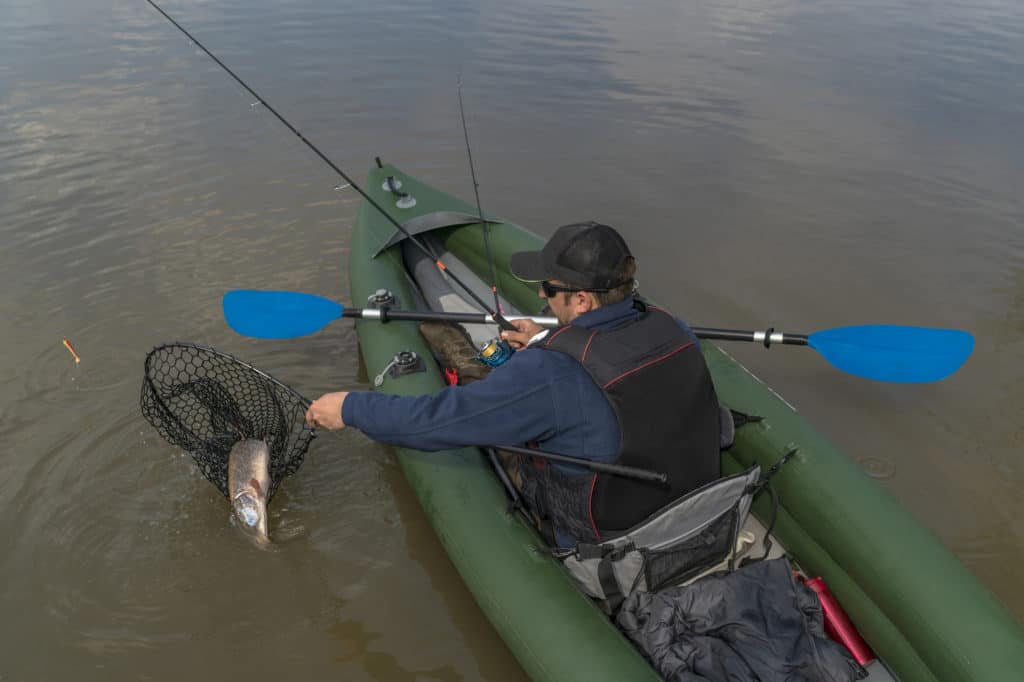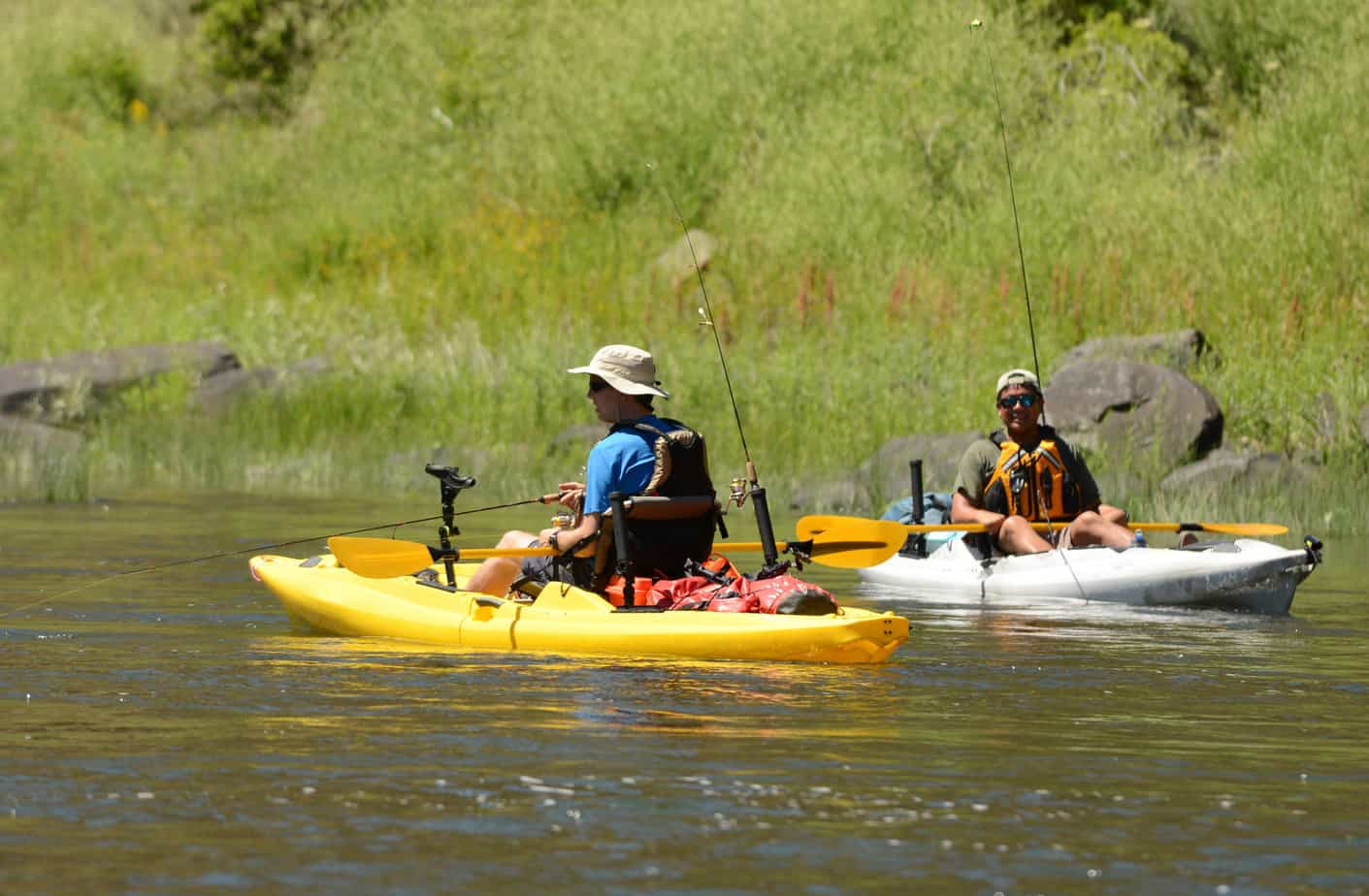Are you a fisherman who’s trying to decide between a sit-on-top vs. a sit-in kayak? Which one is better for fishing?
If you want to make sure that your next kayaking adventure is as successful and enjoyable as possible, then this article has all the information you need!
We will compare the pros and cons of both types of kayaks so that you can choose which one suits your needs best.
Additionally, we will provide tips for picking out the right fishing kayak tailored specifically to your individual wants and needs.
So don’t miss out – read on to learn more about “sit on top vs sit in kayak: which is better for fishing”!
Sit-on-Top Kayaks

Sit-on-top kayaks are a popular choice for fishing due to their stability and ease of use.
They typically have an open deck, meaning the user sits directly on top of the hull rather than inside it.
This makes them easier to get in and out of, as well as more stable when paddling or standing up to cast.
Advantages
One of the main advantages of sit-on-top kayaks is that they are generally more affordable than sit-in models.
Additionally, they offer better access to gear since there is no cockpit enclosure restricting movement around the boat.
This also makes them ideal for anglers who need quick access to tackle boxes or other items while fishing.
Finally, these boats tend to be lighter weight and easier to transport than traditional kayaks with enclosed cockpits.
Disadvantages
While there are many benefits associated with sit-on-top kayaks, there are some drawbacks as well.
These boats do not provide much protection from wind or waves compared to traditional designs which can make them uncomfortable in choppy conditions or during extended trips where exposure could become an issue.
Additionally, these boats may not track as straight in water due to their open design which can make paddling longer distances difficult at times.
Key Takeaway: Sit-on-top kayaks are a great option for fishing due to their affordability, accessibility to gear, and lightweight. However, they don’t offer much protection from wind or waves and may not track as straight in the water.
Sit-In Kayaks

Sit-in kayaks offer more protection from the elements than sit-on-top kayaks, making them ideal for colder climates or rougher waters.
They also provide better stability and maneuverability due to their lower center of gravity.
However, they can be more difficult to get in and out of than sit-on-top models, which may make them less desirable for those with limited mobility.
Advantages
Sit-in kayaks are generally considered to be safer and more stable than sit-on-top models due to their lower center of gravity.
This makes them well-suited for choppy waters or other challenging conditions where a higher degree of control is needed.
Additionally, they offer greater protection from the elements since you’re enclosed within the hull rather than exposed as you would be with a sit-on-top model.
Disadvantages
The main disadvantage of using a sit-in kayak is that it can be harder to get into and out of compared to its counterpart.
This can make it less desirable for people who have difficulty getting up off the ground or those with limited mobility issues such as arthritis or joint pain.
Another big disadvantage is it is more difficult to cast and spot fish since you are sitting so low in the water.
Furthermore, these types of kayaks tend to require additional accessories such as spray skirts and thigh straps which add cost and complexity when setting up your boat before hitting the water.
Key Takeaway: Sit-in kayaks offer greater stability and protection from the elements, but may be difficult to get in and out of for those with limited mobility. Advantages: increased control, greater protection; Disadvantages: harder to access.
Comparison of Sit on Top vs Sit In Kayaks for Fishing
When it comes to fishing, the type of kayak you choose can make a big difference in your experience. Sit-on-top and sit-in kayaks both have their advantages and disadvantages when it comes to fishing.
Stability and Maneuverability
Sit-on-top kayaks are more stable than sit-in kayaks because they provide greater balance due to their wider base.
This makes them ideal for beginner fishermen/fisherwomen who may not be as confident or experienced with paddling a boat.
However, this stability also means that they are less maneuverable than sit-in kayaks which can be beneficial for more experienced fishermen/fisherwomen who need to quickly move around while out on the water.
Comfort and Storage Capacity
Sit-on-top kayaks typically offer more storage space than sit-in models due to their open design which allows you to store items inside the hull of the boat rather than having them strapped onto the outside of it.
Speaking of outside storage…there are ample ways to safely store gear on a sit-on-top utilizing bungees, milk crates, Ram Mounts, etc.
They also tend to be more comfortable since there is no cockpit rim pressing against your legs or back while sitting down for long periods of time out on the water.
Key Takeaway: Sit-on-top kayaks are more stable and offer greater storage capacity, making them ideal for beginner fishermen. Sit-in kayaks provide better maneuverability and may be more comfortable for experienced anglers. Key benefits include stability, storage capacity, comfort, and maneuverability.
Factors to Consider When Choosing a Fishing Kayak
When choosing a fishing kayak, there are several factors to consider.
The type of water you’ll be fishing in is one of the most important considerations.
If you plan on fishing in calm, shallow waters like lakes and ponds, then a sit-on-top kayak may be your best bet.
These types of kayaks offer more stability and maneuverability than their sit-in counterparts.
On the other hand, if you plan on tackling rougher waters such as rivers or ocean waves, then a sit-in kayak might be better suited for your needs since they provide greater protection from wind and waves while still allowing for plenty of storage space.
Your budget is another factor to consider when selecting a fishing kayak.
Sit-on-top models tend to cost less than their sit-in counterparts but can still range widely in price depending on features such as size and material used in construction.
Additionally, some models come with accessories that can add to the overall cost so it’s important to factor these into your decision-making process as well.
Finally, it is important to take into account your skill level as a fisherman/fisherwoman when choosing which type of kayak will work best for you.
No matter what type of fishery you choose, make sure that it fits within both your budget and skill level before making any final decisions.
Key Takeaway: When choosing a fishing kayak, consider the type of water you’ll be in, your budget, and your skill level. Sit-on-top models are more stable and cost less but sit-in kayaks provide greater protection from wind and waves.
Tips for Picking the Right Fishing Kayak for You
Test Drive Different Models Before Buying
It’s important to test-drive different models of fishing kayaks before you make a purchase.
You want to make sure that the kayak is comfortable for you and fits your needs.
Make sure to try out different sizes, materials, and features so that you can get an idea of what works best for you.
Also, consider taking a friend with you who has experience with kayaking so they can give their opinion on which model would be best suited for your needs.
Consider Accessories That Will Make Your Trip Easier
When picking out a fishing kayak, it’s important to think about accessories that will make your trip easier such as rod holders, tackle boxes, paddle leashes, and more.
These items will help keep all of your gear organized and easily accessible while on the water.
Additionally, look into purchasing life jackets or other safety equipment in case of an emergency situation while out on the water.
If possible, ask other fishermen or fisherwomen who have experience using various types of fishing kayaks what they recommend based on their own experiences.
They may be able to provide valuable insight into which type of fishing kayak is right for you based on their own personal preferences and knowledge about certain brands or models available in the market today.
FAQs in Relation to Sit on Top vs Sit in Kayak: Which is Better for Fishing

Which style of kayak is best for fishing?
Sit-on-top kayaks offer more stability and easier access to gear, while sit-in models provide better protection from the elements.
Both styles can be outfitted with accessories such as rod holders and fish finders.
Inflatable kayaks are also an option for those looking for a lightweight, easy-to-transport vessel.
Ultimately, the best style of kayak will depend on your individual needs and preferences when it comes to fishing trips.
Is a sit-in kayak good for fishing?
Yes, a sit-in kayak is a great option for fishing. It offers stability and comfort while you’re out on the water, as well as plenty of storage space for your gear.
Plus, it’s easier to maneuver than larger boats or canoes.
You’ll also be able to get closer to shorelines and shallow areas where fish may be hiding without disturbing them too much.
With all these advantages, it’s no wonder why so many anglers are choosing sit-in kayaks when they go fishing.
Are sit-on-top kayaks good for lakes?
Yes, sit-on-top kayaks are great for lakes.
They provide stability and maneuverability in calm waters, allowing you to explore with ease.
The open design also makes them ideal for fishing as it allows easy access to gear and provides plenty of room to move around.
Plus, they’re lightweight and portable so you can easily transport them from lake to lake or even take them on a camping trip.
What length kayak is best for fishing?
When choosing a kayak for fishing, the length of the boat is an important factor to consider.
Generally speaking, longer kayaks are more stable and provide better tracking in open water conditions.
Shorter kayaks are more maneuverable and can be used in tighter spaces like rivers or streams.
The best length for a fishing kayak will depend on where you plan to fish and what type of fish you’re targeting.
For larger bodies of water such as lakes or oceans, 12-14 feet is recommended; while smaller bodies of water such as creeks or rivers require shorter boats around 8-10 feet long.
Ultimately, it’s important to choose a boat that fits your needs and provides the most comfort during your time on the water.
Conclusion
In conclusion, when it comes to sit-on-top vs sit-in kayaks for fishing, there is no one-size-fits-all answer.
It really depends on your individual needs and preferences.
Sit-on-top kayaks offer more stability and easier access to the water while sit-in kayaks provide better protection from the elements.
Consider factors such as size, weight capacity, portability, storage space, and cost before making a decision.
No matter which type of fishing kayak you choose, make sure that it meets all of your needs so that you can enjoy a safe and successful day out on the water!

